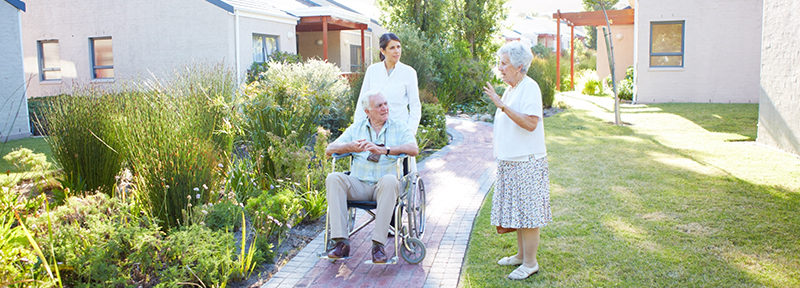
If you’re the owner or facility manager of a building that houses or caters to seniors, you’ve likely watched in alarm as increasingly high summer temperatures have led to your cooling costs steadily increasing.
Global climate change is leading to higher average temperatures throughout the year, while extreme heat bakes region after region during the summers. The recent news headlines say it all:
- Bay Area sizzles, and there’s more heat on the way (Mercury News)
- Heat wave fuels ‘crazy heat, even for Mississippi’ and power demand record in Texas (USA Today)
- Increasing humidity, driven in part by climate change, is making even modest heat waves unbearable (Washington Post)
Extreme summer temperatures are a potentially hazardous situation for seniors. As the National Institutes of Health (NIH) explain, older adults are at significant risk of developing heat-related illnesses like heat stroke, heat edema (swelling in ankles and feet), heat syncope (dizziness brought on by exercising in high temperatures), heat exhaustion and heat cramps. Collectively these illnesses are known as hyperthermia and are just as dangerous for seniors as the more well-known hypothermia.
While anyone can suffer from heat-related illnesses, seniors are especially at risk because their bodies are less able to handle temperature extremes. As we age, our skin and circulatory systems change, leading to decreased blood circulation and inefficient sweat glands. Add in potential heart, lung, kidney or weight issues, and it becomes even more difficult for seniors to handle summer temperatures. Also, the NIH has found that lifestyle factors, such as overdressing, living in hot quarters, or not understanding how to respond to weather conditions, also have a significant impact.
For facility managers who oversee properties that house seniors or other at-risk populations, keeping the HVAC system top of mind and maintenance on track is a must. This checklist can help you keep your residents safe and comfortable, even during the most extreme summer temperatures.
-
Routine Service & Inspection
Routine visits from your HVAC professional ensure your system runs at peak performance and that potential service issues are found and repaired quickly. A maintenance contract guarantees that your system is checked on a schedule. During visits, your service technician should be conducting visual inspections of assembly systems, along with cleaning and lubricating components. Technicians should also be running diagnostics tests on electrical and mechanical components to determine parts that can be tuned up or may need replacement. Maintenance should be conducted before the cooling season (April or May), in mid-summer to ensure there are no cooling system issues (July or August), ahead of the winter heating season (October or November), and again in winter (January or February) to confirm the heating system is in running optimally.
-
Program for Performance
A regular, programmed temperature in senior facilities is much more important than it may be in other facilities. Seniors are more sensitive to changes, so keeping temperatures consistent through programming and other facility management practices are important for senior comfort. Additionally, programmed temperature control can significantly reduce your facility’s energy costs.
-
Facility-Wide Consistency
Set it and forget it? Not at all. To ensure the comfort of your residents and catch problems early, you should be regularly checking on the actual temperature in your facility in multiple zones and rooms. If you’re noticing inconsistencies – cold spots and warm spots that deviate from your thermostat settings – that is a warning sign that something could be wrong in your evaporation and condensing coils, your ductwork or your thermostat.
-
Air Filters
While dirty air filters are an easy fix, a clogged filter can seriously hamper airflow and performance, leading to larger problems like burnout of critical circulation motors. For senior housing facilities, filter changes will likely be required more often than in more controlled environments, such as a data center or laboratory. Changing filters on a regimented schedule will help to keep your system running in optimal ranges. Consult with your HVAC technician for your facility’s ideal filter replacement schedule.
-
Your Thermal Envelope – Walls, Windows, Doors, Roof & Floor
While your HVAC system is critical for maintaining the health and safety of your senior residents, remember that it is but a single component of a larger system. Your building’s thermal envelope is not to be overlooked. Sealing cracks, adding insulation and reducing heat gain from windows and doors play a huge role in both the comfort of your facility and the health of your HVAC system. The tighter and more insulated the building envelope, the less work your HVAC system must do.


